Springhill
Nigel and Sue Smith run a 1,000 hectare cattle farm located on the outskirts of Tamworth. After the 2018-2019 drought they decided it was time to adapt to a rapidly changing climate. They implemented a series of regenerative farming strategies to bring biodiversity back to their land.
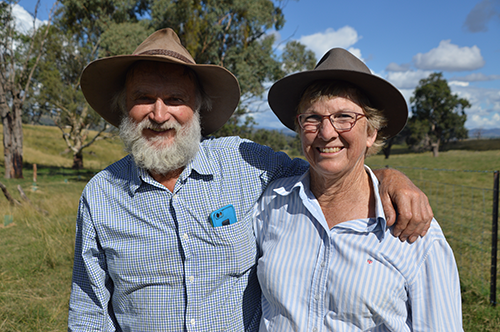
Nigel and Sue Smith.
Stepping away from conventional farming
In 2018 and 2019, Australia experienced one of its most severe droughts ever recorded. At Woonooka Angus Stud, the soil quicky became bare ground, forcing Nigel and Sue to feed their cattle everyday. The disastrous effect on their land pushed them to completely change their farming practices. “Droughts are incredibly difficult financially. Our land suffered a fair bit during that time so we decided that there had to be a better way” says Nigel.
They started implementing regenerative farming strategies to build up a better farm ecosystem. “These strategies will make our operations more sustainable, more productive and financially and psychologically we will be far better off” explains Nigel.
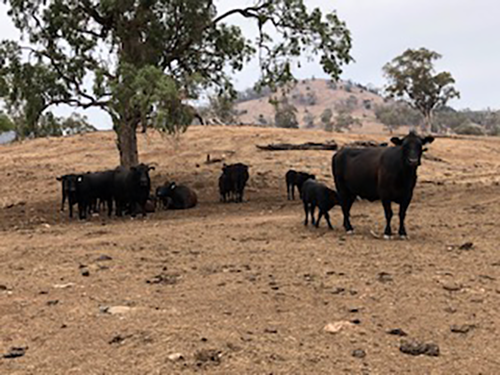
Woonooka Angus Stud during the drought in October 2019.
Retain water in the landscape
Nigel and Sue used rocks to build up over 40 leaky weirs in the active gullies that run through their property. “The whole idea is to slow down the water and retain it within the landscape. It also stops the erosion of the banks” says Nigel.
“We noticed that after a down pour, the water now remains in gullies for weeks rather than just a couple of hours” explains Sue.
They also fenced off sections of active gullies to prevent stock from eroding the banks. In these fenced off areas, they established woodlots where they planted 20 different species of native trees and shrubs. “As well as helping reduce the erosion, these woodlots will create a biodiverse habitat for native animals such as birds, mammals and reptiles” explains Sue.
New water resources
Towards the end of the drought, the farm started to run out of water. A stressful situation that could have meant selling their stock if the dry weather lasted any longer.
In order to adapt to future droughts, they decided to upgrade their stock water reticulation system. They installed a new solar pump and bore and additional troughs, providing water to new paddocks and previously unwatered areas.
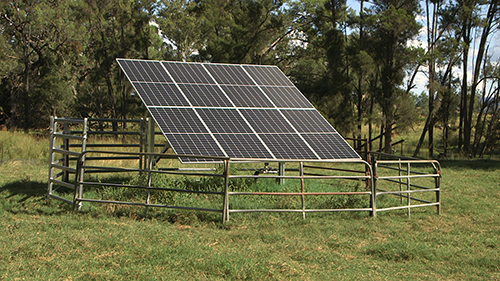
Nigel and Sue doubled their water supply and storage capacity by installing a new bore, pump, 3 water tanks and 12 additional troughs.
Groundcover at 100%
The number one rule of regenerative farming is 100% groundcover, 100% of the time. Spreading poultry manure instead of using chemical fertiliser helped Nigel and Sue achieve this goal. “The poultry manure helped restore and enhance soil biodiversity. It brought back microbes and carbon that had disappeared from the soil and provided a good nutritional base for the plants to come out” explains Nigel.
To improve the health and resilience of the soil they also decided to sow multi-species crops instead of a monoculture in their cultivation paddocks. Sowing a mix of species provides a variety of microbes and nutrients to the soil and help to improve its structure and water holding capacity.
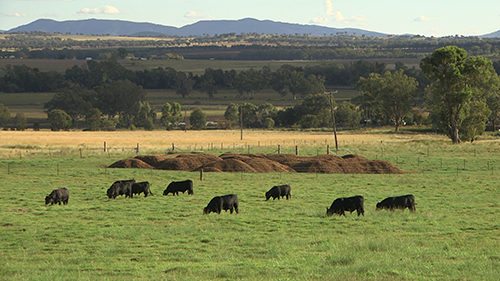
Poultry manure provides essential nutrients for soil health such as carbon, nitrogen and potassium.
Rotational grazing
Nigel and Sue subdivided some of their paddocks to rotationaly graze their cattle and give each paddock a longer resting phase. “That allows plants to recover and to keep their roots systems intact” says Nigel.
The changes have meant the property now retains maximum groundcover with a mix of species all year round and the Smith’s have seen improvements in production and cattle condition. “We adopted a whole farm ecosystem approach and the positive impact of these regenerative farming strategies are now clearly visible” explains Sue.
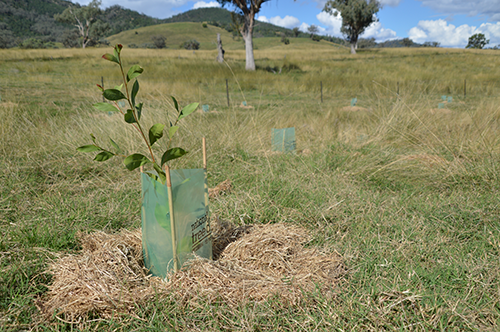
A mix of eucalyptus, bottlebrush, wattles, paperbarks and grevillas are being planted along active gullies.
This project was supported by North West Local Land Services through funding from Catchment Action NSW.
Want more information?
Check out the video on the project below or download a copy of the case study PDF, 664.1 KB.